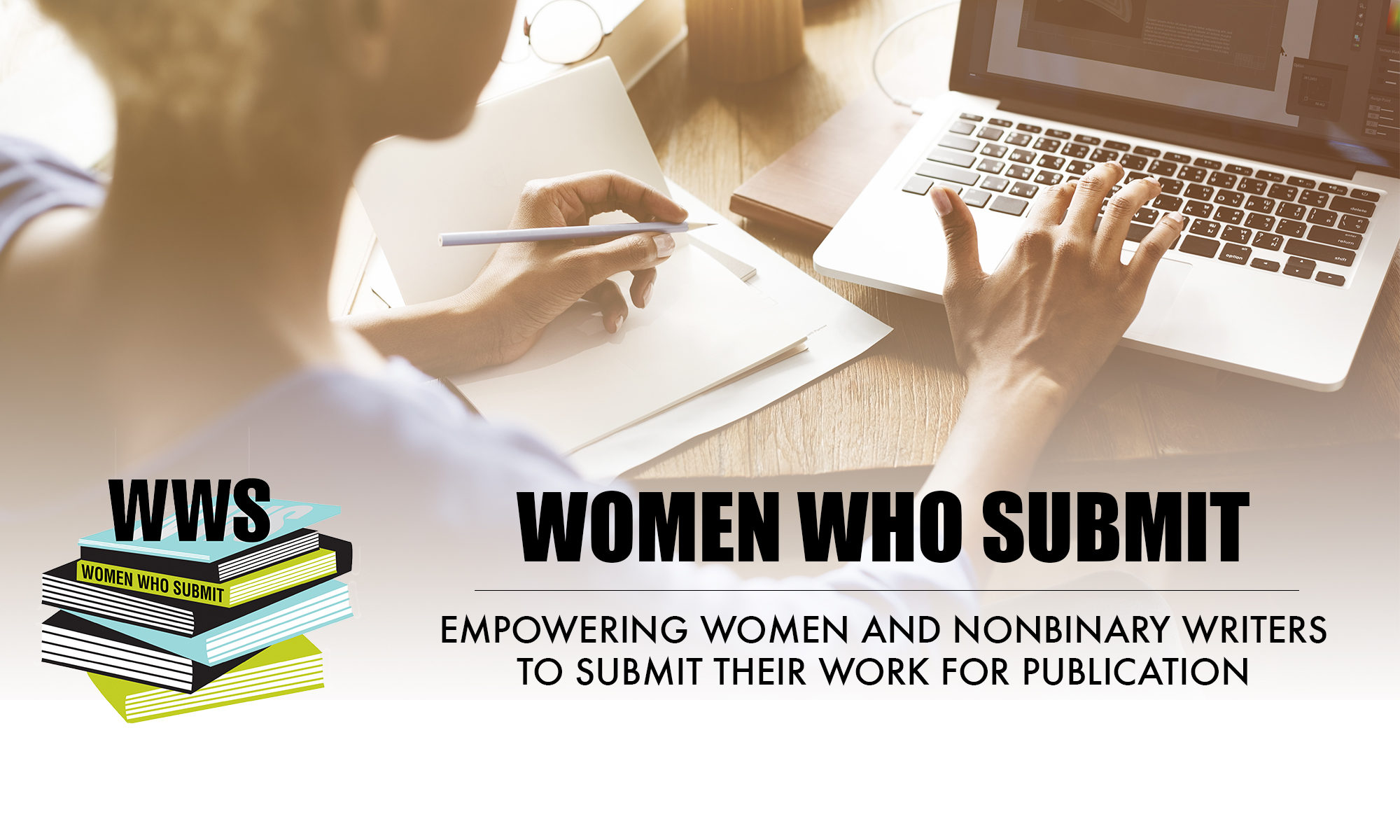When I first received an invitation to speak on a panel at a Lambda Litfest event called “Intentional Intersectionality,” I passed the invitation on to the rest of the Women Who Submit leadership team. These type of invitations often pay, and they’re an opportunity to not only raise WWS’s visibility but also the visibility whomever is speaking on behalf of the org, so opening them to the whole team is our regular practice. Plus, we don’t ever want one person to appear as the sole voice of Women Who Submit.
With no one else available, I almost passed because as someone who identifies as a straight, cis woman I didn’t want to take up space meant for another, but the organizers felt strongly about having Women Who Submit represented as a space for change, so I said yes.
Before the event organizers Cody Sisco, Rachelle Yousuf, and Sakae Manning, invited the readers and panelists to a planning meeting where we saw the space, a presentation room at The Armory Center for the Arts in Pasadena, and then walked to a cafe to discuss logistics, intentions, and possible panel questions. In this planning meeting, Sakae looked over at me and asked, “How does Women Who Submit create intersectional spaces?”

It was a question I should have been prepared for since intersectional was in the name, and I’d been invited to be on the panel as a creator of such spaces, but suddenly sitting with the other talented and passionate readers and organizers, still figuring out how I could best serve this event, I was stumped.
It wasn’t until an hour later, on the walk back to my car, that I started to formulate a reply. I let Sakae know I now had an answer, and she let me know such was the purpose of the pre-panel meet up. I was relieved, but on the night of the event the question never came up. So now, I share it here with you.
Every Person is a Resource
At our bi-monthly meet ups, we invite local, professional writers to share their expertise with our community in one-hour workshops. We seek to curate speakers that reflect the marginalized communities we want to empower such as women of color, queer writers, non-binary and trans writers, disabled writers, mothers and caretakers, and working class writers. Speakers have presented on topics such as building an author website, finding an agent, and strategies for submitting to contests and tier one journals.
Six times a year, we invite a person to speak on a subject of their expertise, but at each of these workshops, we believe all people in the room are a resource. Often when someone asks a question at our workshops, the answer is group sourced. By honoring the worth of each writer’s knowledge and experience, we raise each other up.
Over the summer, I attended a week-long writers’ workshop where in one session a big, fancy east coast book editor asked a small group of us if we had questions for him. The way he conducted this Q&A made me feel like a child forced to listen to her adult teacher. But I wasn’t a child, and he wasn’t a teacher, but an editor with a capitalistic agenda.
When the discussion got to the difference between self-publishing, indie, and big business publishing, I didn’t agree with his response, and thought back to the writers I’d met in WWS who had found success in these varying spaces. I remembered our WWS workshops too and wished to speak, but instead I stood up and walked out on the conversation because it wasn’t a space that cared for my voice.
My hope is that since we’ve done away with this kind of elitism people will feel welcomed to stay and be apart of the conversation.
Accessibility
Some barriers we consider when planning our meetings are physical capacity, mental health, financial ability, and family obligations. To ensure that people facing such barriers can still reach our resources, we hold our public meet-ups at the Exposition Park Regional Public Library (when space allows). This location is central, close to the train and major bus lines, has handicapped and free parking, and is wheelchair accessible. We also Facebook Live our one-hour workshops for those who find themselves homebound, and all workshops and resources are FREE!
Failures are Accomplishments
Every month we have a “Rejection Brag,” a closed forum for our members, where writers can post the journals, contests, and other opportunities that chose to pass on their work. In this brag we celebrate each NO as a proof of the work each of writer is doing to advocate for her/their work. In a capitalist society, we’re taught that failure is shameful and a sign of not being able to cut it, but at WWS we’ve flipped that narrative, and use failure as a tool for advancement and community building.
Culture of Sharing
WWS shares everything: journals, spreadsheet templates, cover letter samples, snacks, submission calls, and even chisme (insider knowledge of literary markets, institutions, and orgs). Any resource we have is for the greater community. As I said at the beginning, even speaking engagements are shared. In a capitalistic society, it’s believed that only a few can succeed, but we reject this scarcity model. There are enough opportunities for all, and one person’s win is everyone’s win.
In the end, these are a few strategies we use for building spaces with intentionality, but we have areas for growth. And if you see a way WWS can be more intersectional, please share. We’re listening!
Our next free, public workshop is this Saturday, October 12th at Antioch University Los Angeles. “Pay attention: attending and collaborating at the end slash beginning of the world” with Rachel McLeod Kaminer and Rocío Carlos begins at 10am.















